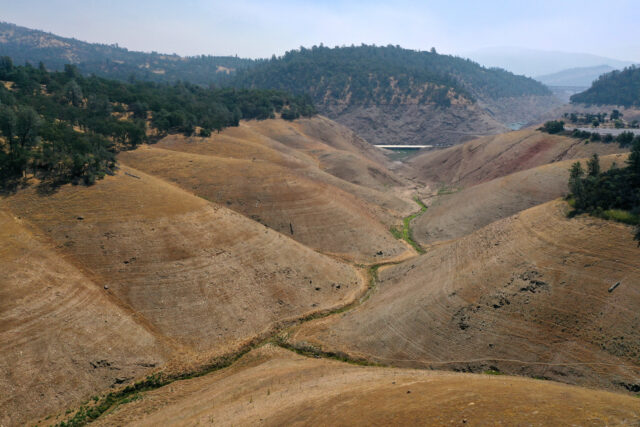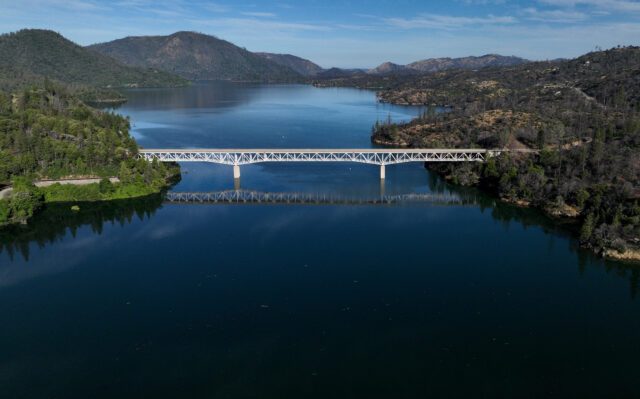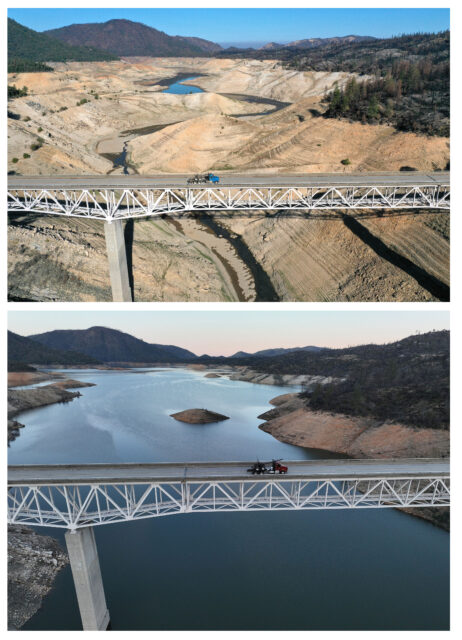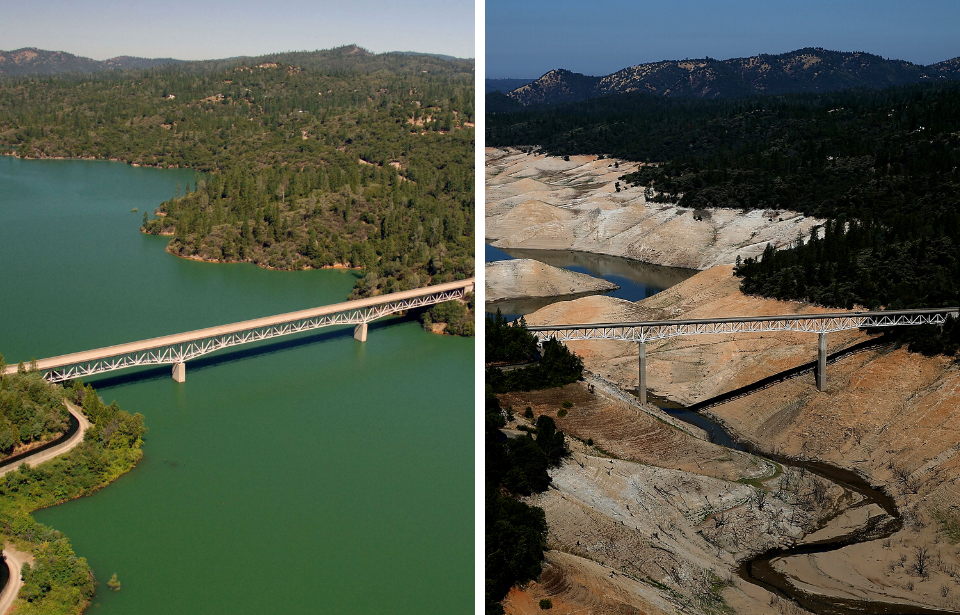Reaching some of the lowest water levels ever recorded in its history, Lake Oroville suffered deeply from years of drought across California. Better late than never, the drought finally came to an end and, 15 years later, the reservoir is recording 100 percent water level capacity. Photos taken only a few years apart showcase the dramatic difference in Lake Oroville’s health.
California was suffering from years of drought

Fed by Feather River, Lake Oroville is located behind the tallest dam in America, the Oroville Dam, which stands at 770.5 feet tall. The dam provides hydroelectric power to the fourth-largest power plant in the country, the Edward Hyatt Power Plant. However, Lake Oroville was one of several reservoirs to reach critically low water levels as the West experienced a “megadrought.”
The second-largest reservoir in the state of California, Lake Oroville having low water levels had a big impact on communities. In September 2021, the levels dipped to their lowest ever, to 623.47 feet, making up just 24 percent capacity of the entire reservoir. As a result, the Edward Hyatt Power Plant was forced to close that year, unable to provide power to areas of the state.
The last time Lake Oroville reached full pool was in 2012. However, after 15 years of drought, the reservoir has hit full pool once again.
Lake Oroville is now full to the brim

As of June 2023, the water levels at Lake Oroville are measuring at 100 percent capacity. Nearing 900 feet, they are more than 100 feet higher than where they were this time the previous year. Even further, the levels are at 127 percent of where they should be during this time of year, and the conditions are “a stark difference” from the previous three years.
“It’s refreshing to see Lake Oroville and other State Water Project (SWP) reservoirs like San Luis near or at capacity,” Karla Nemeth said, California Department of Water Resources (DWR) director, said in an interview with ABC News.
Anticipating full capacity, the DWR announced in April 2023 that the State Water project would be delivering 100 percent allocation for the first time since 2006. In response, storage at the reservoir has risen more than 240 feet, gaining more than 2.5 million acre-feet of water since the end of 2022.
The DWR’s hope is that the storage will provide carryover for the following year, delivering the water needs of approximately 27 million Californians.
Snowpack melt is one of the biggest contributors

One of the biggest contributors to the rising water levels at Lake Oroville is melting snowpack from the Sierra Nevada mountains. The melt typically occurs in April after temperatures rise drastically in the area. However, this year, some spots received up to 200 percent more snowpack than usual, caused by atmospheric rivers drifting along the West Coast over winter.
More from us: https://www.abandonedspaces.com/towns/garnet-montana-ghost-town.html
Thankfully, Lake Oroville can hold 3.5 million acre-feet of water, so the excess melting snowpack remained contained. As well, to prevent potentially devastating flooding, officials performed the strategic release of water right as the snowpack began to melt.
It’s remarkable what a year’s difference can do.
